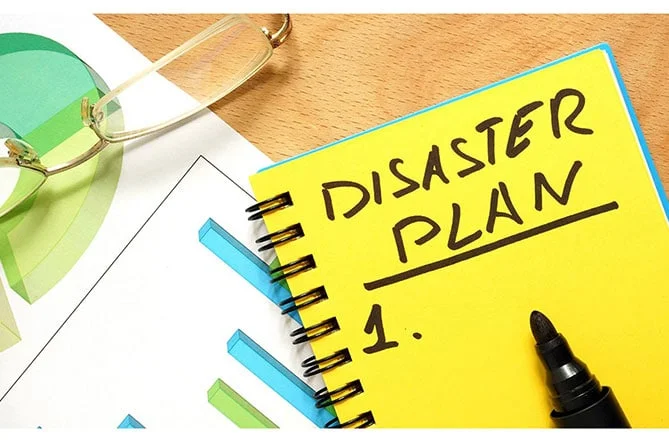Title: The Caribbean's "Compounding Disaster Trap" is a Warning for Us All
Okay, folks, let's talk about something serious, something that’s happening right now in the Caribbean, and why it’s a flashing neon sign pointing directly at all of us. We're hearing about Hurricane Melissa, a Category 5 monster that just tore through Jamaica, Cuba, and Haiti. But the real story isn't just about one storm; it’s about what happens after the storm, and then the storm after that.
See, these islands weren't exactly starting from zero when Melissa hit. Jamaica was still reeling from Hurricane Beryl in 2024. Cuba's power grid collapsed during Hurricane Oscar that same year! And Haiti? Haiti was already facing a humanitarian crisis before Melissa even showed up, struggling with political instability, gang violence, and a cholera outbreak. Talk about a perfect storm – or, more accurately, a compounding storm.
This is what disaster researchers are calling the "compounding disaster trap," and it's terrifyingly simple: the time between major disasters is shrinking, becoming shorter than the time it takes to fully recover. Think of it like trying to bail water out of a boat that has more holes than hull—you just can't keep up! This trap works through three nasty feedback loops. First, you've got infrastructure collapse. When a hurricane hits an already weakened system, everything goes down at once: power, water, communications, hospitals… Grenada after Hurricane Beryl, Dominica after Hurricane Maria – these weren't isolated incidents; they're the new normal.
Then there's the economic debt spiral. Countries exhaust their reserves recovering from one disaster, borrow to rebuild, and then… BAM! Another one hits while they're still paying off the last debt. Hurricane Ivan cost Grenada over 200% of its GDP! Maria cost Dominica 224%! Each storm balloons the debt, tanks the credit rating, and makes borrowing for the next disaster even more expensive. It's like being stuck on a credit card treadmill from hell.
And finally, the most heartbreaking: social erosion. Each disaster weakens the human infrastructure. After Maria, over 200,000 people left Puerto Rico! Almost a quarter of Dominica's population bailed after the same storm. Community networks break down, and psychological trauma piles up. The very social fabric needed to manage recovery is being torn apart.

A Glimpse of Our Future?
The Association of Village Council Presidents (AVCP) in Alaska is sounding similar alarms. They're seeing increasingly severe storms – what they’re calling "Arctic typhoons" – battering vulnerable Alaska Native villages. After ex-Typhoon Halong ripped through the region, destroying entire communities, they're pushing for a regionally-centered approach to disaster preparation. I mean, can you imagine losing your entire village to a storm? A place you've called home for generations? It's almost too much to bear. When I first read about Kipnuk being left in a "jumble of homes, a boat and a boardwalk," I honestly just sat back in my chair, speechless. Preparing for future ‘Arctic typhoons,’ villages seek new disaster strategy
The problem, as AVCP President Vivian Korthuis points out, is that we don't know how many more of these storms are in our future. But we do know we need to be as prepared as possible. That means a regional emergency response coordination center in Bethel, more Village Public Safety Officers… and a whole lot of funding. Because rebuilding the same vulnerable roads and power lines, only to watch them wash away in the next storm? That's not just a waste of money; it's a failure of imagination.
So, what's the solution? Adaptive recovery at every level, from households to the global stage. Cash assistance and community-based mental health services to help families cope with trauma. Investments in local networks to rebuild trust. Decentralized power grids with renewable energy sources. Natural infrastructure like restored mangroves and wetlands. Strong enforcement of modern building codes. And, crucially, fixing the debt trap with hurricane clauses in bond agreements, debt-for-climate swaps, and pre-positioned climate finance.
The current system, where countries have to prove their losses after a disaster to access assistance, is completely backwards. We need to provide support before disasters strike, with agreed-upon funding commitments and regional risk-pooling mechanisms that cut through the bureaucratic red tape. The Caribbean isn't just some faraway place with problems we can ignore; it's a warning. No time to recover: Hurricane Melissa and the Caribbean’s compounding disaster trap as the storms keep coming It's a glimpse of what's coming for coastal and island communities worldwide as climate change accelerates.
Time to Wake Up and Smell the Urgency
We can either learn from the Caribbean's experience and redesign disaster recovery now, or we can wait until the trap closes around everyone. And honestly, folks, I'm not sure how much longer we have to wait. Let's get to work.
